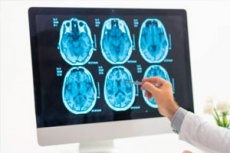Brain imaging study reveals connections critical to human consciousness
Last reviewed: 14.06.2024

All iLive content is medically reviewed or fact checked to ensure as much factual accuracy as possible.
We have strict sourcing guidelines and only link to reputable media sites, academic research institutions and, whenever possible, medically peer reviewed studies. Note that the numbers in parentheses ([1], [2], etc.) are clickable links to these studies.
If you feel that any of our content is inaccurate, out-of-date, or otherwise questionable, please select it and press Ctrl + Enter.

In a paper titled "Multimodal MRI reveals brainstem connections that support wakefulness in human consciousness," published in Science Translational Medicine, a team of researchers from Massachusetts General Hospital and Children's Hospital Boston has created a map of brain network connectivity that they believe is critical to human consciousness.
The study included high-resolution scans that allowed the researchers to visualize brain connections with submillimeter spatial resolution. This technological advance allowed them to identify previously undetected pathways connecting the brainstem, thalamus, hypothalamus, basal forebrain, and cerebral cortex.
Together these pathways form the "default ascending activating network" that maintains wakefulness in a resting state in a conscious person. The concept of the default network is based on the idea that certain networks in the brain are most functionally active when the brain is at rest. While other networks are more active when the brain performs goal-directed tasks.
To investigate the functional properties of this default brain network, the researchers analyzed 7 Tesla resting-state functional MRI data from the Human Connectome Project. These analyzes revealed functional connections between the subcortical default ascending activating network and the cortical default network that promotes resting-state self-awareness.
Complementary structural and functional connectivity maps provide a neuroanatomical basis for the integration of wakefulness and awareness in human consciousness. Researchers publish MRI data, brain mapping techniques and a new Harvard atlas bottom-up activating network to support future efforts to map the connectivity of human consciousness.
"Our goal was to create a map of the human brain network that is critical to consciousness and to provide clinicians with better tools to detect, predict, and promote recovery of consciousness in patients with severe traumatic brain injury," explains lead author Dr. Brian Edlow, co-director of the Massachusetts Neuroscience Center, associate director of the Center for Neurotechnology and Neurorecovery (CNTR) at Massachusetts General Hospital, assistant professor of neurology at Harvard Medical School, and fellow at the Chen Research Center at Massachusetts General Hospital for 2023-2028.
Dr. Edlow explains: “Our connectivity results suggest that stimulating dopaminergic pathways in the ventral tegmental area has the potential to help patients recover from coma, as this hub is connected to many brain regions that are critical to consciousness.”
Senior author Dr. Hannah Kinney, emeritus professor at Boston Children's Hospital and Harvard Medical School, adds that "the human brain connections we identified can be used as a road map to better understand a wide range of neurological disorders associated with altered consciousness, from coma to seizures and sudden infant death syndrome (SIDS).
The authors are currently conducting clinical trials to stimulate the default ascending activating network in patients with coma after traumatic brain injury, with the goal of reactivating the network and restoring consciousness. p>
